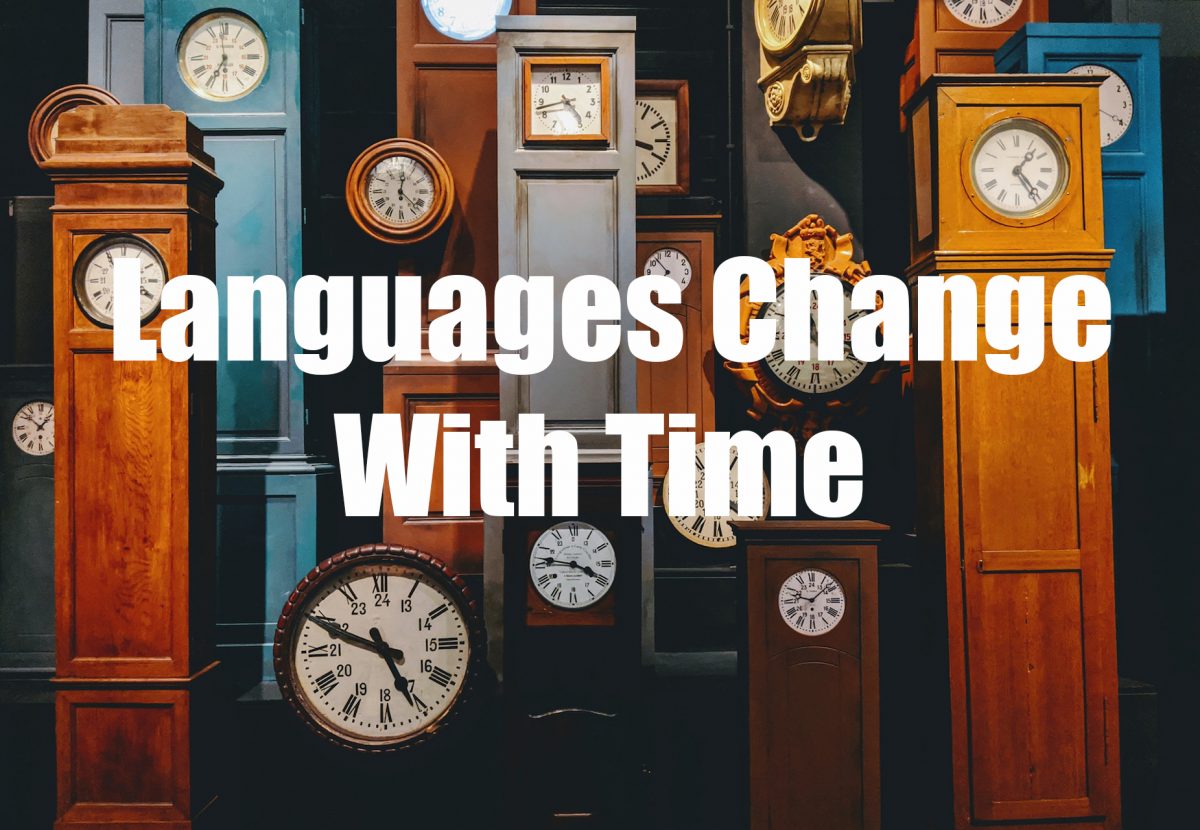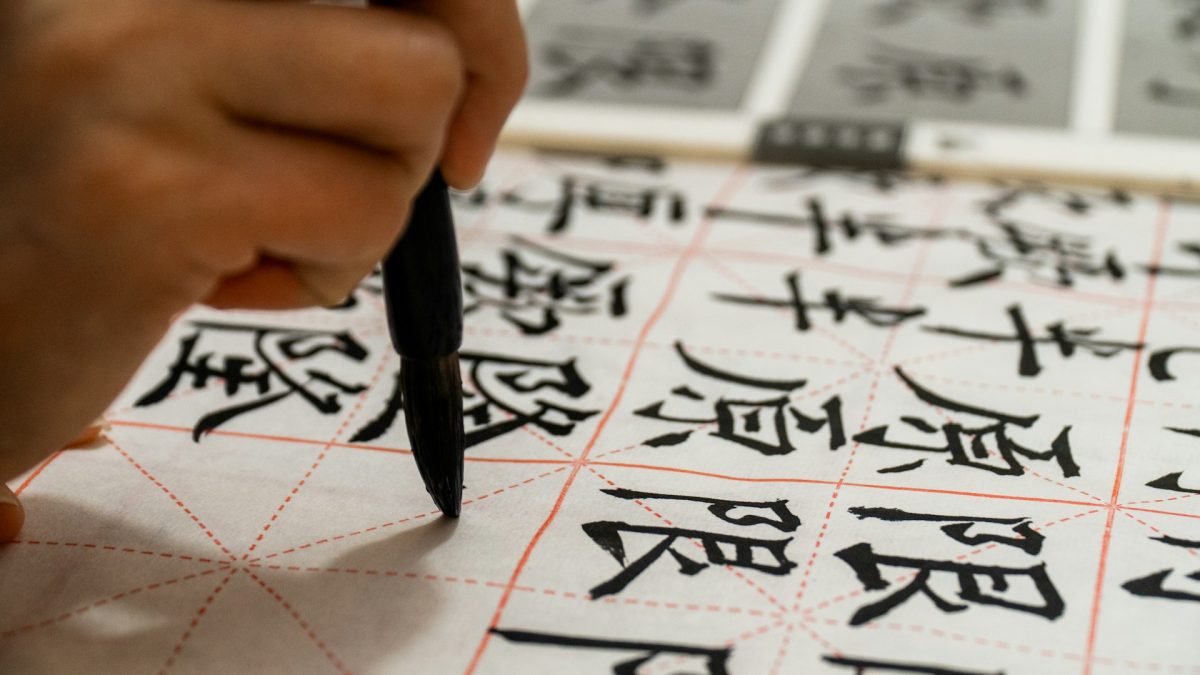
(*Linked or embedded content may have been removed or be unavailable.)
There is some debate as to whether time travel is possible at all, but for a moment, imagine that it will one day become possible. It might help to be dressed appropriately for the era you’re travelling to. But perhaps more importantly, are you prepared to speak the language? Language is a living thing, so it changes over time from generation to generation. Depending on how far back or forward you go, you may find yourself at a loss for words.
Obviously, if you travel back to ancient Rome, don’t expect the locals to be speaking English with a British accent as they’re so often portrayed in Hollywood movies. You’ll need to brush up on your Latin skills. But even if you stay put geographically and travel back in time only, you could easily wind up in linguistic trouble. Of course, English wasn’t even a thing in the Americas prior to the colonial period. So, what about in England, where the English language began?
From around the year 410 to 1150, you’d be dealing with what’s called “Old English,” which despite its name, would be totally incomprehensible to modern English speakers. Speakers of Frisian in the north of the Netherlands, or speakers of modern Icelandic, might have a slightly better chance at making heads or tails of it. 1150 to 1500 was a period of “rapid” change for English, which was supercharged by the Norman Conquest of England. Due to the French linguistic influx that happened during this time, the average Frenchman today would probably have a better chance deciphering the “Middle English” of this period than the average Englishman or American. After about 1550 you’d finally come into contact with a more recognizable English, if you’ve studied Shakespeare, that is. This phase in the English language is called “Early Modern English.” P’rhaps thee can practiceth using the english to shakespearean translat’r yond thee can findeth on this web page.
The challenge is pretty straightforward, isn’t it? Get acquainted with what’s different in the language between then and now. Well, the language barrier gets a little trickier thanks to something called “semantic change.” This is the change in language that happens over time, shifting the meaning of a word into something that may be completely different from the original. So those words that you are able to pick up may have a meaning totally different from what you may think. Almost like the “false friends” phenomenon that occurs between two different languages.
Contents
Language is riddled with semantic change
Is it foolish to be nice?
The current meaning of “nice” is “pleasing, agreeable, delightful, amiably pleasant, kind.” Most folks are taught to be nice to each other. So it may come as quite a shocker to learn that the same word in Middle English meant “foolish, stupid,” from the Old French for “silly, simple,” which in turn came from Latin nescius for “ignorant, incapable.”
Is it nothing to be naughty?
Currently the word “naughty” means being “disobedient, mischievous, improper, tasteless, or indecent.” But back in the Middle English of around 1400, it meant to be “without naught” or as we would say today, to “have nothing.” In other words, being naughty meant to be poor.
Break your fast with dinner?
Today the word “dinner” refers to the main meal of the day, usually eaten in the evening, and the first meal of the day in which you break your fast is, as you’ve guessed, “breakfast.” Some people prefer the word “supper” for the evening meal and may use “dinner” for the midday meal, but this represents a change that’s happening during our lifetimes. Go further back and we discover that English dinner comes from Old French disner, originating from Latin disjejunare or “breaking the fast,” so it originally referred to the first meal of the day.
The trick to being cute
“Cute” in English today means “attractive (especially in a dainty way), pleasingly pretty, or charming.” But it originally meant “clever, sharp, quick-witted,” being shortened from “acute.” So, the next time you say something you think is clever, but the response is “how cute,” you can take that as a stamp of approval for your quick wit and mental acuity.
Is it awesome or awful?
“That’s awesome, man!” In the modern world, “awesome” means “inspiring an overwhelming feeling of reverence, admiration, or fear.” That “fear” part is not very prevalent nowadays, but the root “awe” meant exactly that, coming from Middle English awe and Old Norse agi “fear,” cognate with Gothic agis and Greek áchos “pain.” Awesome and awful both come from “awe,” with the suffixes –some and –ful used for the formation of adjectives. As such, both words were essentially identical, although now, one has a positive and the other has a negative connotation.
Do you literally mean literally?
The original meaning and dictionary definition of “literally” is “in the literal or strict sense, actually, without exaggeration.” But more recently, the word is widely used as an intensifier meaning “in effect, virtually,” thereby almost contradicting the original sense of the word and bringing it closer to its opposite “figuratively.”
It happens in every living language
This phenomenon of semantic change is not unique to English, of course. Any language that is used by many people in their daily lives undergoes this transition.
Let’s pan eastward to Japan, where the language is literally worlds apart from English. Japan was settled about 35,000 years ago by Paleolithic people from the Asian mainland, and the culture that gave birth to its language is considered to have begun around the Yayoi Period (300BC-250AD) while its earliest surviving written record dates back to the 8th century. In other words, plenty of room for semantic change.
Splendid damage?
By now it shouldn’t come as a surprise to learn that subarashii (素晴らしい) , which is a common way of saying “wonderful, splendid, excellent,” used to have the opposite meaning of “terrible, outrageous, disastrous” even as late as the Taisho Period (1912-1926) when newspapers covering the Great Kanto Earthquake (1923) talked about 素晴しい被害 (which would mean “splendid damage” today). Perhaps the best way to wrap our minds around this is to consider the English word “extraordinary.” Whereas subarashii used to mean “extraordinarily bad,” it had shifted to mean “extraordinarily good” in the course of a century.
Hey you, sir!
Kisama (貴様) is a rude way of addressing somebody nowadays, but it comes from a super-respectful and honorific term for “you” that was used among the samurai class during the Edo Period (1603-1867). And when you think about it, the two kanji characters that make kisama, taken individually, are both very respectful, consisting of 貴 (noble) and 様 (an honorific that means sir or madam).
That’s not what the dictionary says
Actually, there are a whole slew of words and phrases that Japanese people today are using incorrectly, where popular usage doesn’t match up with the dictionary definition. Take, for instance, yakubusoku (役不足). Most Japanese today use this to mean “lacking in the capabilities to fill a role,” while the dictionary defines it as “having a role that is lacking in relation to capabilities.” Then there’s kakushinhan (確信犯), commonly used to mean “a person who commits a crime knowing it’s a bad thing to do,” while the dictionary refers to it as “a person who commits a crime believing it’s the righteous thing to do.” Or shisshou (失笑), commonly used as “to snicker at someone scornfully,” while it actually means “to burst out laughing in a situation where laughter is inappropriate.” All of these are examples of semantic change in the making, where the dictionary is yet to catch up with changes occurring in the real world.
All over the world, in every language, the lexicon is evolving at a faster pace than dictionaries can keep track of. Some changes end as a short-lived fad, while others take root in the language and become the new norm.
Dealing with the future
Up till now we’ve put the spotlight on ‘past vs. present’ for this living thing called language, so let’s now take a peek forward. We don’t know exactly how any language will change in the future because that depends on everything that will happen from now onward. But what we do know is that the accelerated pace at which language will change to reflect the changing world will create problems for MT (Machine Translation) and even LLMs (Large Language Model algorithms used in Artificial Intelligence), as they may not always have the most up-to-date training data. This would affect not only real-time translation for various social media apps, but also neologisms that constantly appear in science, technology, and social discourse. And let’s face it, while time travel is still a matter of science-fiction, AI is science-fact that’s staring us squarely in the face.
One thing you may consider doing now, to prepare for the inevitable impact of AI on your localization needs as well as your business in general, is to prep and train the AI using the most up-to-date, high-quality corpus (text and speech data) for all languages involved, in parallel (corresponding texts in two or more languages) where necessary, so that the AI will “understand” language and its underlying context on a level that will feel natural to humans. Get as much high quality translation as possible under your belt while you can. And for the time being, keep humans in the loop for troubleshooting and quality control until that baby (the AI) sprouts wings and is literally (no, figuratively) ready to fly. You’ll thank yourself in the future.
Douglass McGowan






